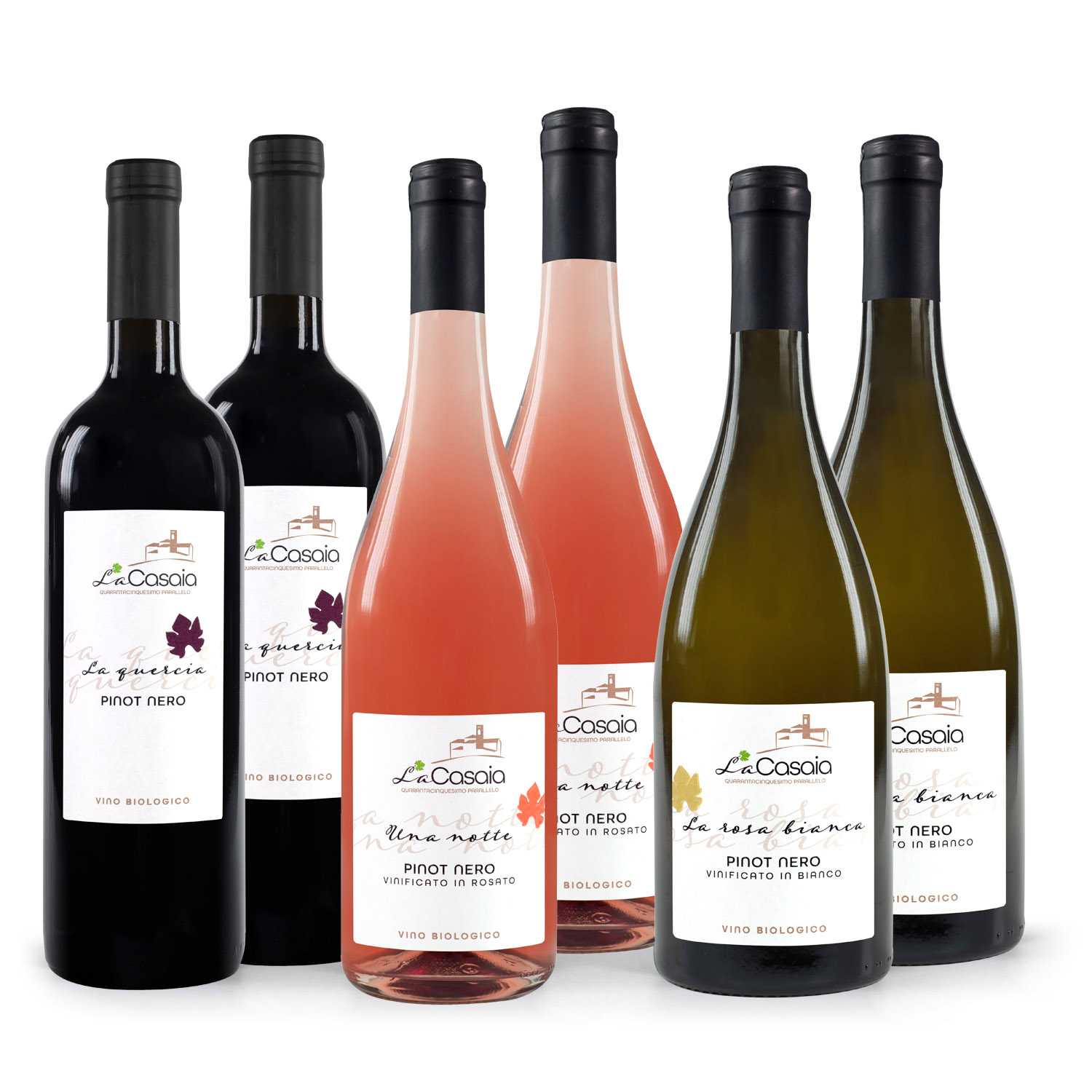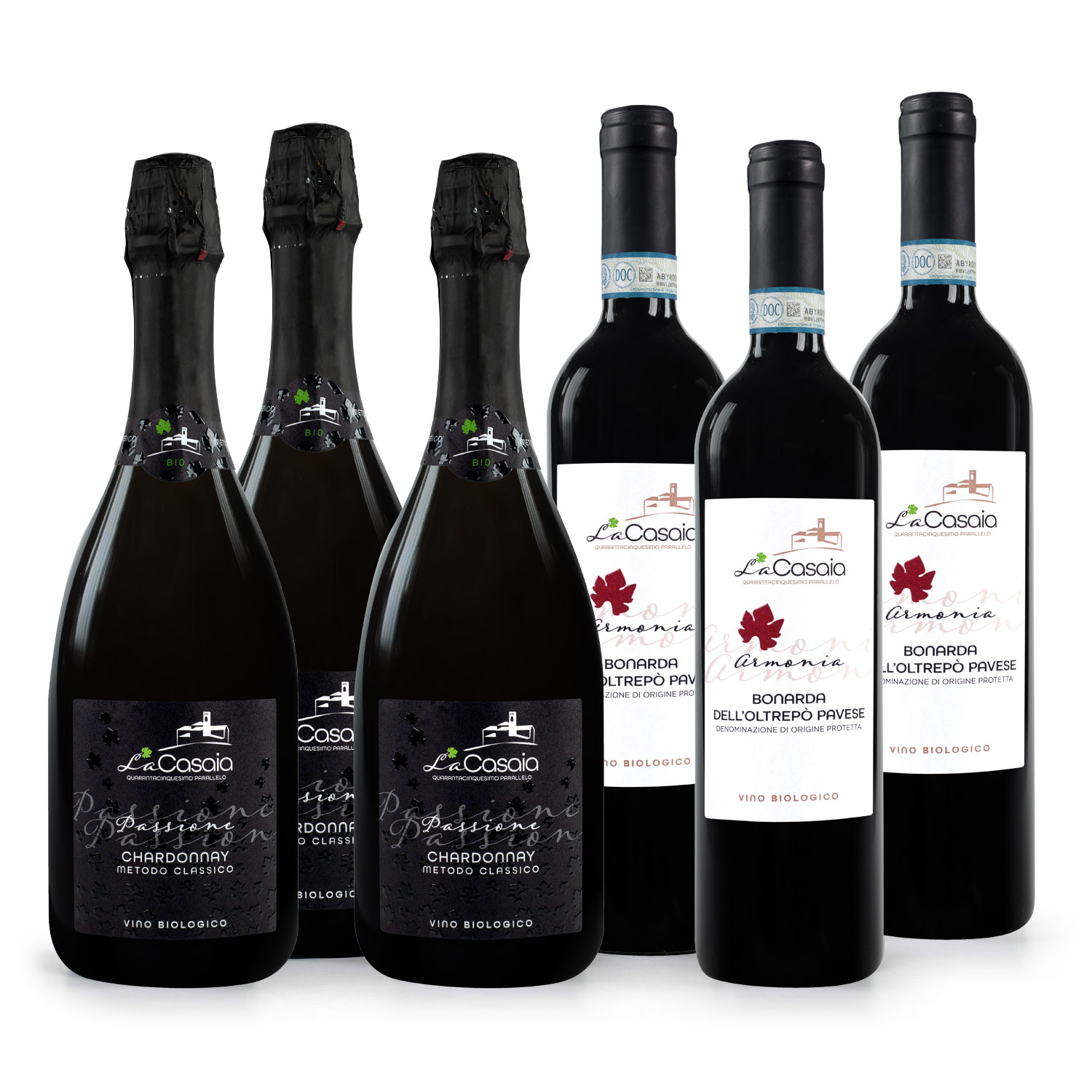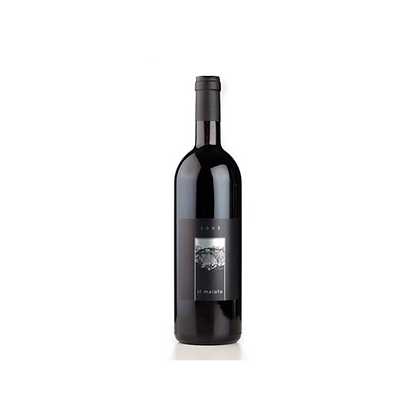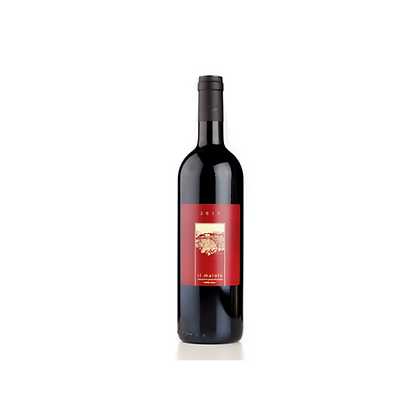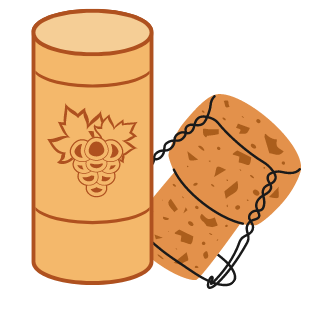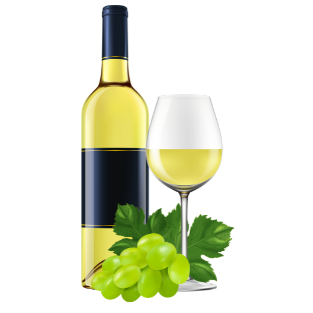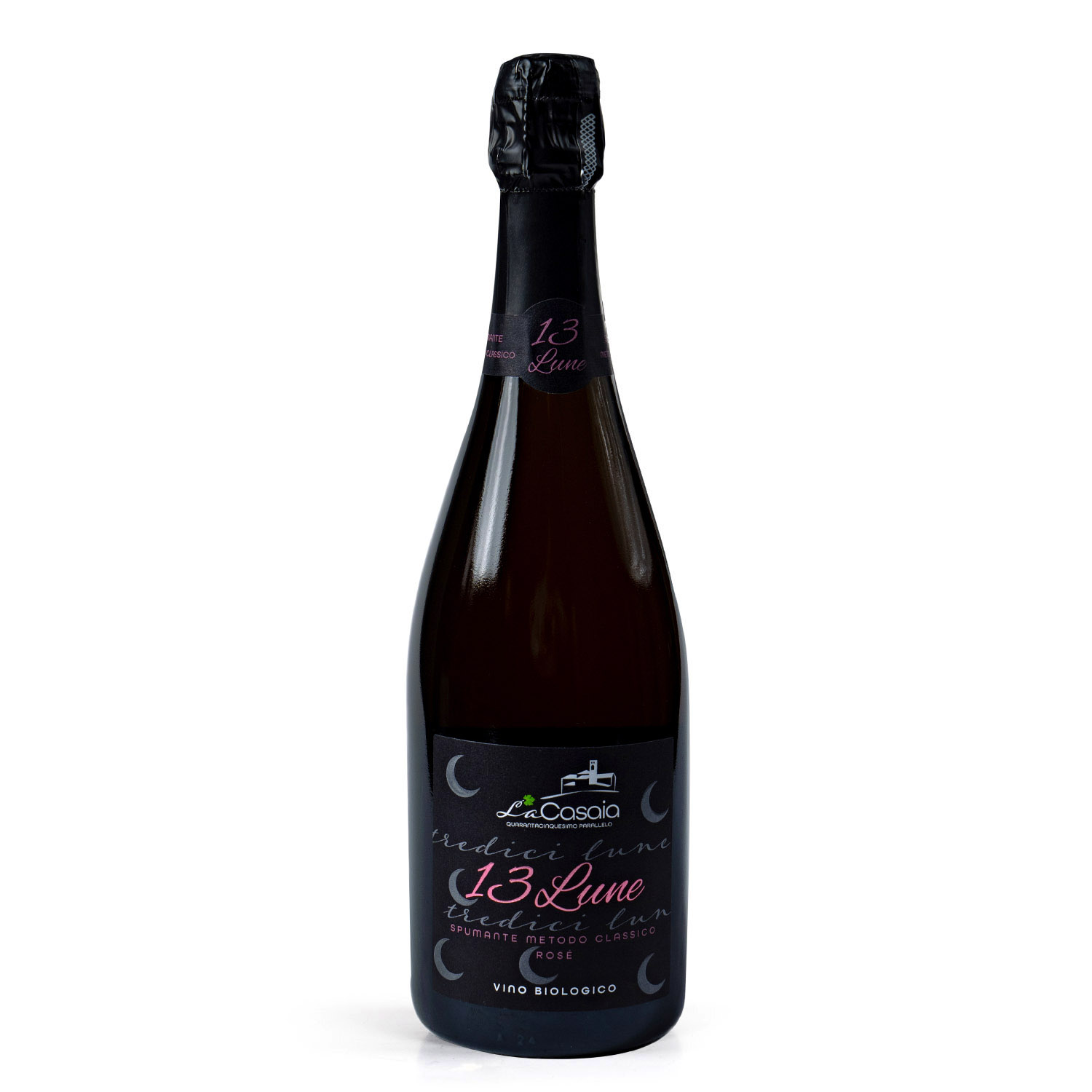

This Classic Method Spumante is born from a careful selection of Pinot Noir grapes.
Production area: The vineyards are located in Lombardy, in the heart of Oltrepò Pavese at about 250 m asl with North / North-West exposure. : the vineyards are located in Lombardy, in the heart of Oltrepò Pavese at about 250 m asl with North / North-West exposure.
Additional information :Weight 1 kg
Characteristics of the vineyard: The vineyard was planted in 2006 with a plant density of about 4000 vines / hectare and trained with the Guyot Basso. All processing stages are carried out in the traditional way, respecting the rules of Organic Agriculture. The good exposure, the high planting density, agronomic practices that respect the plants and a careful and meticulous production method are the key features for a superior quality production. : the vineyard was planted in 2006, with a plant density of about 4000 vines / hectare and trained with the Guyot Basso. All processing stages are carried out in the traditional way respecting the rules of Organic Agriculture. The good exposure, the high planting density, agronomic practices that respect the plants and a careful and meticulous production methodology are the key features for a superior quality production.
Harvesting method: Exclusively manual with selection and sorting of the product.
Vinification : it begins with a light contact of the skins with the must, then moves on to a soft pressing; after which the must is clarified, so as to be able to proceed with the inoculation of selected yeasts to activate the alcoholic fermentation managed at a controlled temperature and never above 16 °C.
The base wine is then bottled (tirage) added with the syrup for the refermentation (Liqueur de Tirage) made up of yeasts and grape must. Once sealed with a crown cap, the bottles are stacked horizontally in the underground part of our cellar. The low temperature is essential to obtain a fine and prolonged perlage. Our Spumante 13 Lune Rosè rests for a minimum of 12 months. The bottles are then placed "upside down" on trestles called "Pupitre" where, daily, by hand, they are rotated and tilted a few degrees so as to gently flow the deposits towards the neck.
At the end of this operation, the disgorging takes place: the neck of the bottles is cooled to about -20°C so that the part of the wine containing the lees under the cork freezes and can be extracted. The Liqueur d'Expedition (a wine syrup) is then added, which compensates for the part of the lost liquid. At this point the bottle is closed with the characteristic mushroom cork and anchored with the metal cage. Ninety days of further refinement in the bottle before the start of marketing.
Analytical data : the technical data sheet of each single lot can be consulted in the company.

